Muscovite and Clay Minerals
| Muscovite is readily recognized by its bright silvery sparkle and its occurrence as tiny thin flakes. It often shows up in sandstones and shales deposited by rivers or deltas. Waves typically wash the flakes of muscovite out of beach sand and transport the pulverized fragments (often too small to see) to settle in the muds found farther offshore.
You need special equipment (such as an X-ray diffraction machine) to tell the many types of clay minerals apart. However, you can recognize clay minerals as the dominant fine-grained component of soil, mud, modeling clay, mudstone, and shale. A super close-up view of clay minerals shows that they have the same platy shape as muscovite or biotite; clays are just a LOT smaller.
|
|
This is a dark sandstone speckled with silvery muscovite flakes. Focus is not great, but zoom in for a closer look.
|
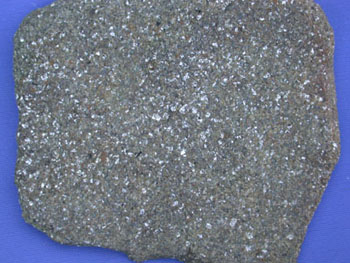
|
|
The bright silvery color of the muscovite flakes makes them sparkle in shales (especially siltstones).
It is worth zooming in to see the sparkles in the long piece of shale just left of center and on the bottom end of the gray shale on the right.
|
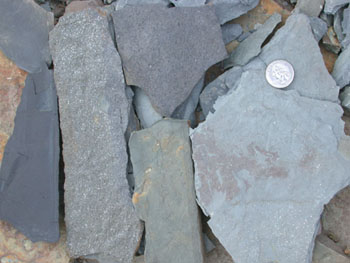
|
|
The distinctly red color of this shale comes from thin coatings of iron oxides on the outer surfaces of the clay minerals.
While the bulk of a shale is normally made of clay minerals, there are also tiny grains of quartz and feldspar, sometimes calcite, and sometimes bits of organic matter (dark).
|
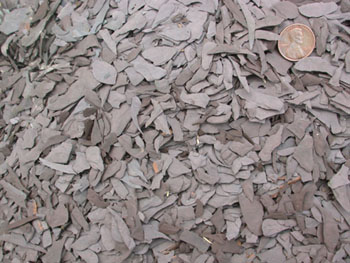
|
|
This shale is identical to the one shown above, except its greenish gray color reflects iron coatings that have been chemically reduced.
Shales with no oxide coatings tend to be one of many shades of gray.
|
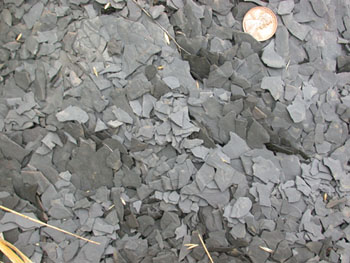
|
|
Smectite clays are famous in some parts of the world because they tend to shrink when dry and expand dramatically when wet. This causes problems for basements, foundations, and hill slopes. Click on the link below to see a close up of the crinkly cracked soil surface:
Zoom in on the soil surface.
|
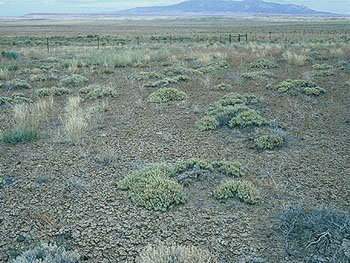
Photo: Norris W. Jones
|
|





